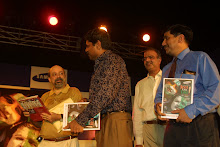Who Cares for Indian Cricket?
By Gulu Ezekiel
Does the Board of Control for Cricket in India care for Indian cricket? More pertinently, should it care for Indian cricket?
Not according to its senior counsel and advocate KK Venugopal who five years ago in the Supreme Court made a statement that shocked cricketers and cricket fans throughout the country—‘If India plays England, it is a match played by the official team of BCCI and not the official team of India…We do not even fly the national flag nor do we use any national emblem in the activities of the Board.’’
Rahul Dravid, Sachin Tendulkar, Sourav Ganguly and the rest play for the official team of the BCCI, Venugopal went onto add and not the official team of India.
A group of former ‘India’ players expressed their sense of outrage and hurt in a joint letter to the BCCI President claiming they had always felt honoured to represent the country and were now distressed by the Board’s stand. One is not aware if the Board bothered to respond to them.
The International Cricket Council has recently introduced the playing of the national anthem before each match in their tournaments including the Champions Trophy in South Africa. The sight and sound of foreigners beautifully rendering ‘Jana Gana Mana’ with the ‘Indian’ team proudly standing to attention was one of the few highlights of another disappointing tournament for our cricket fans.
Perhaps it is time for the BCCI to inform the ICC that India’s national anthem should not be played before their matches and the BCCI could pay a handsome fee to AR Rehman for the use of ‘Jai Ho’ instead of ‘Jana Gana Mana’. Or else the Indian government may be forced to intercede on this matter considering the BCCI’s stated legal stand.
The inaugural Champions League to be played between the top 12 Twenty20 teams from around the world (excluding Pakistan, Bangladesh and Zimbabwe) is the latest bogus tournament that the BCCI has cooked up to fill its coffers.
Last month it introduced the Corporate Cup—more or less a 50-over version of the IPL—which had little or no impact on the public and the media.
The BCCI/Indian team’s performance in ICC tournaments after 2003—excluding the inaugural World T20 in South Africa in 2007 which it won—has been abysmal. But is the Board really bothered as long as it rakes in the billions and officials, agents, sponsors and select players line their pockets?
IPL czar Lalit Modi had recently said on a TV channel that the IPL had produced “the greatest cricket display in the history of the game.”
Yet both team coach Gary Kirsten and captain MS Dhoni have stated that the IPL is nothing but a low-grade domestic tournament and should not be the basis for selection for international cricket.
Here is a question for the BCCI and cricket fans-- can you name one Indian cricketer in the last two seasons who has excelled in the IPL and then gone onto make a mark in international cricket? The answer is plain and simple—not a single one. But the coach and captain whose opinion should count and not Modi’s have promptly been gagged by the Board. The truth after all invariably hurts.
What the IPL has succeeded in doing is creating a new generation of half-baked players with faulty techniques who strut around like superstars based upon their dubious performances in the IPL.
This year in South Africa Manish Pandey became the first Indian player to score a century in the IPL. He is nowhere in the ‘national’ reckoning but in a recent interview he glibly explained how he has attained celebrity status due to that century. And proudly stated he now wears tight shirts with buttons open, low-waist jeans and spikes his hair. The poor deluded young man!
Last year after the first IPL season, Dhoni skipped the Test series in Sri Lanka that immediately followed, citing fatigue. Would the Board or any of the IPL franchises allow such leeway to one of its star players if he wished to skip an IPL or Champions League tournament on the same grounds? For that matter, would any player dare risk such a move, considering the huge loss of earnings that would entail?
Yet the ‘Indian’ team now has to grapple with its top players missing out on international cricket due to injuries picked up in the IPL. And the Board, the IPL management, and its band of embedded journalists desperately initiate ‘Operation Cover-up’ whenever this occurs.
The Champions League begins three days after the end of the Champions Trophy; next year’s World T20 begins five days after the end of IPL Season III. This despite Kirsten’s plea to give more time for rest and recuperation. The BCCI has not slotted in a single T20 International for ‘their’ team between the last World T20 held in June and the next in April-May 2010. They believe IPL III is preparation enough.
The captain and coach disagree. But then, who cares for ‘Indian’ cricket? Certainly not the BCCI.
(Published in New Indian Express, Hindustan Times and dreamcricket.com; October 2009).
